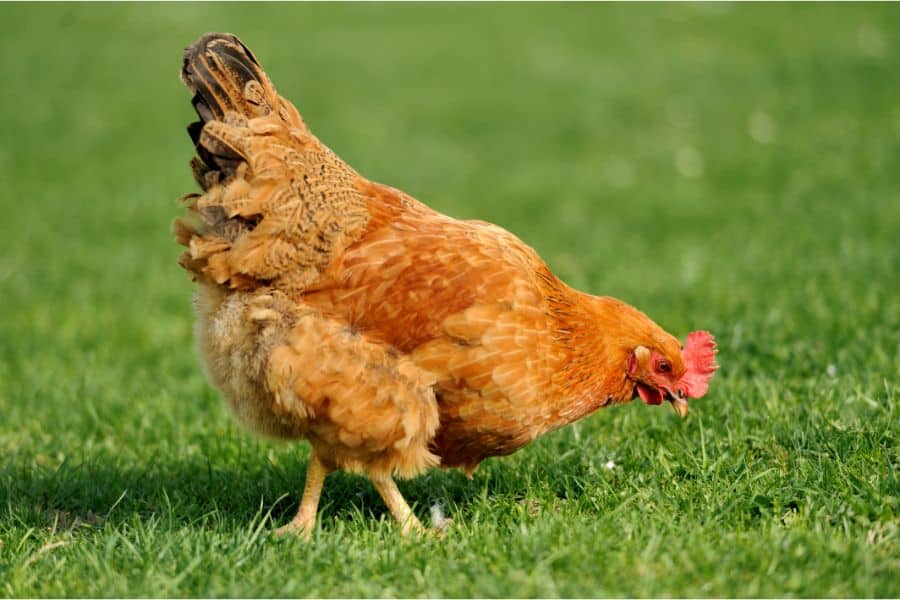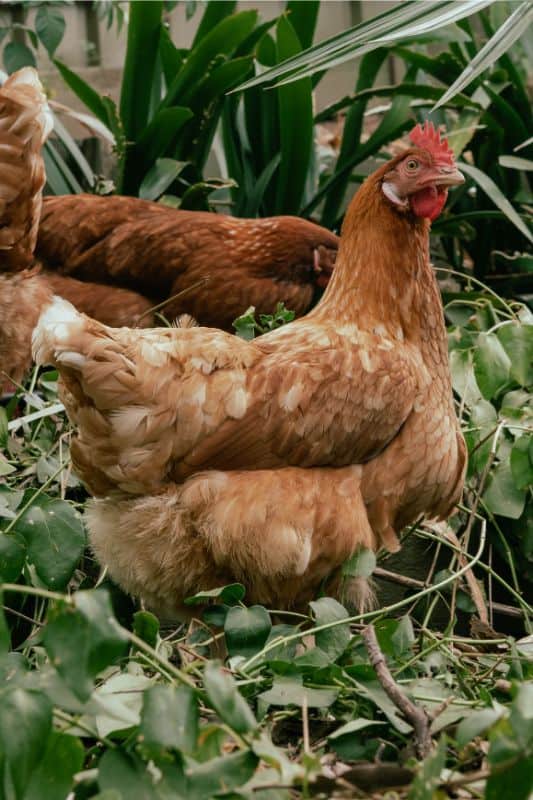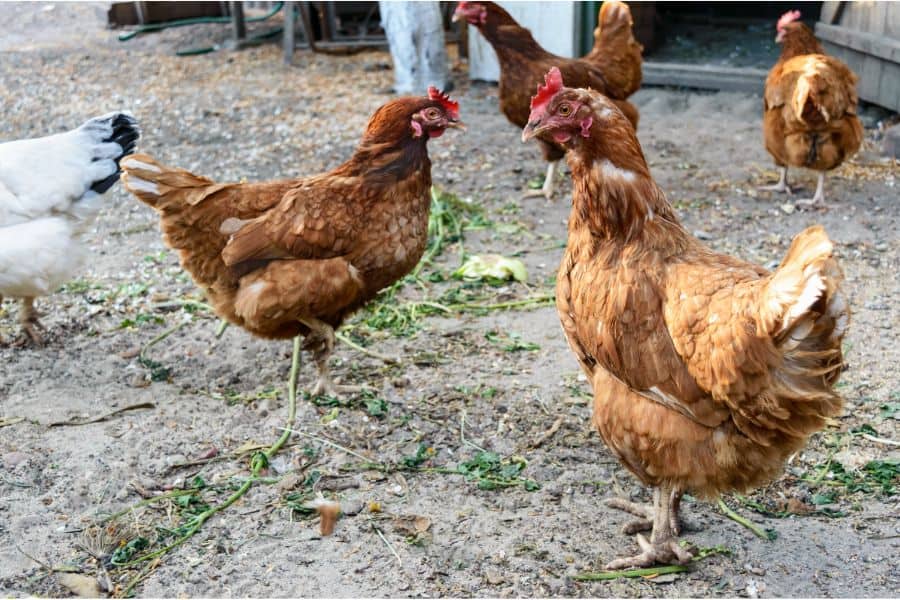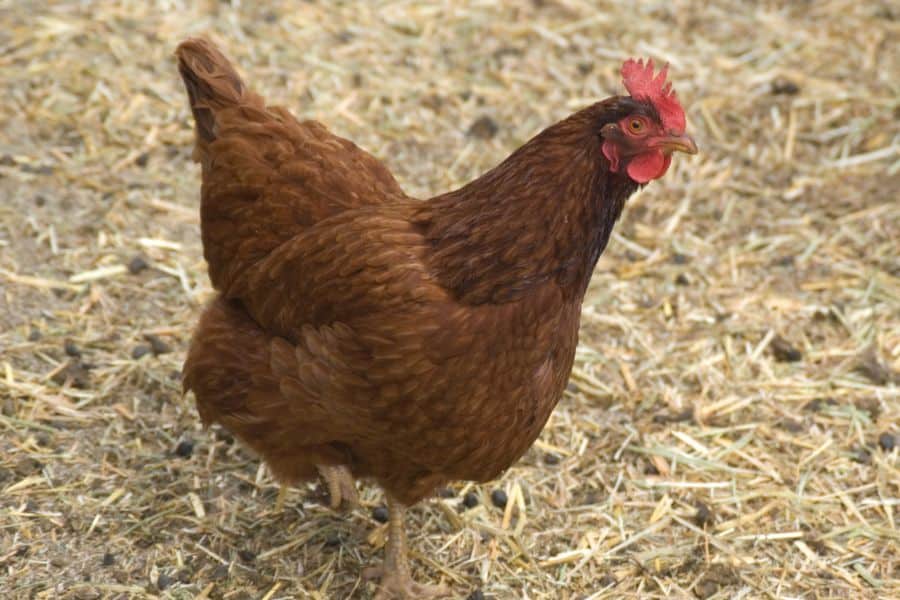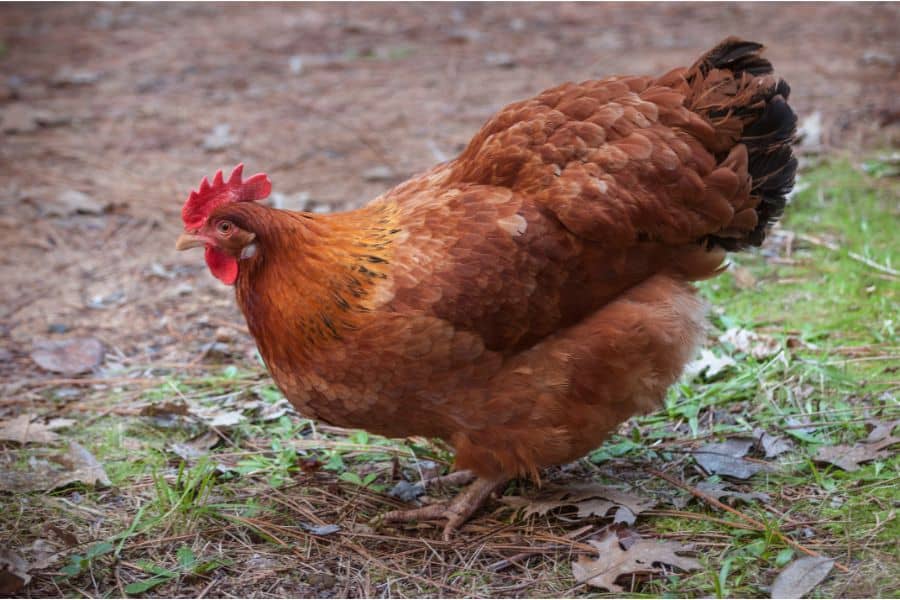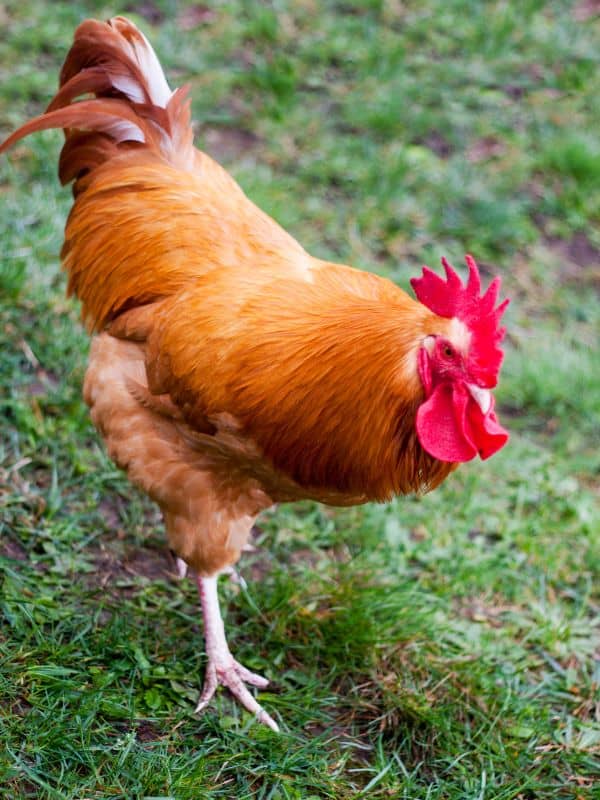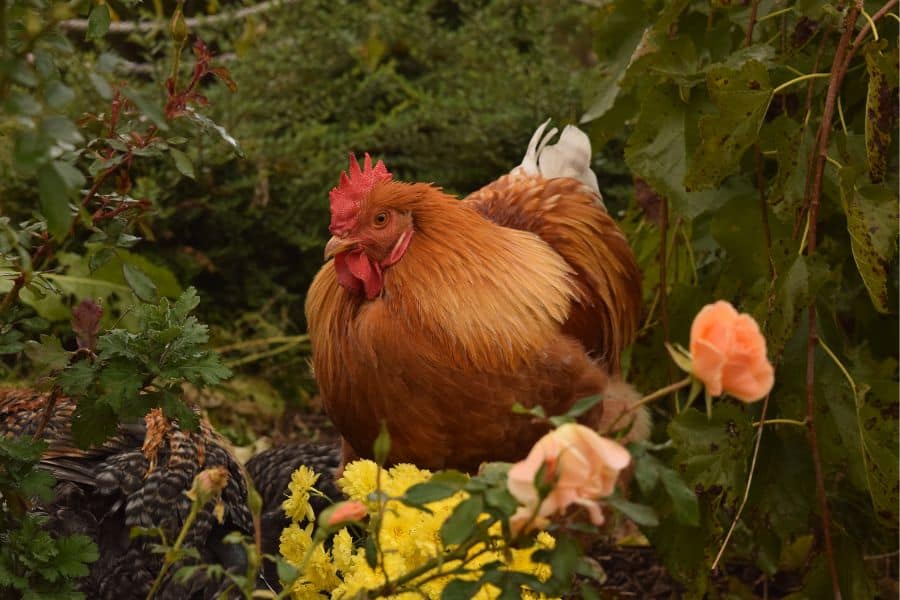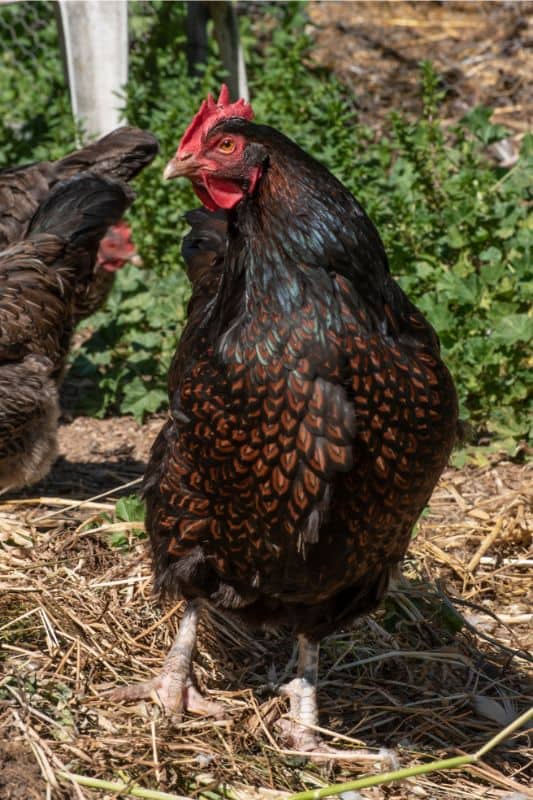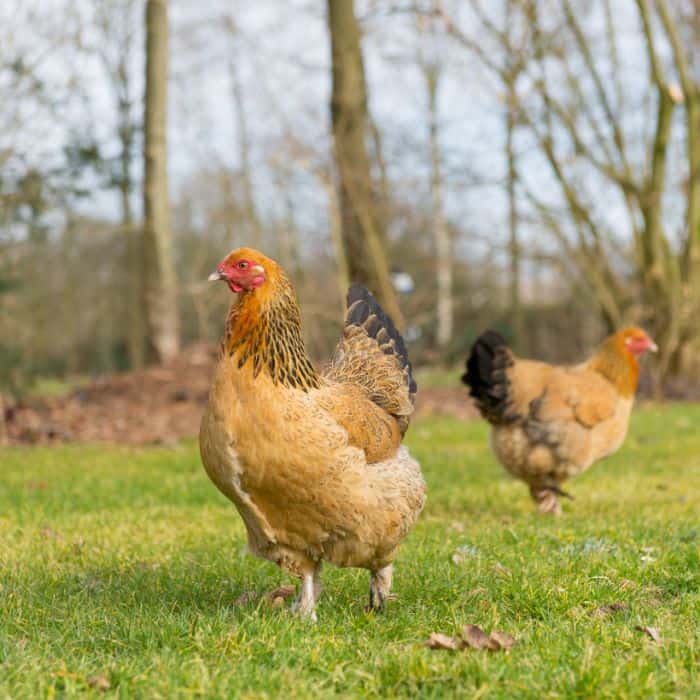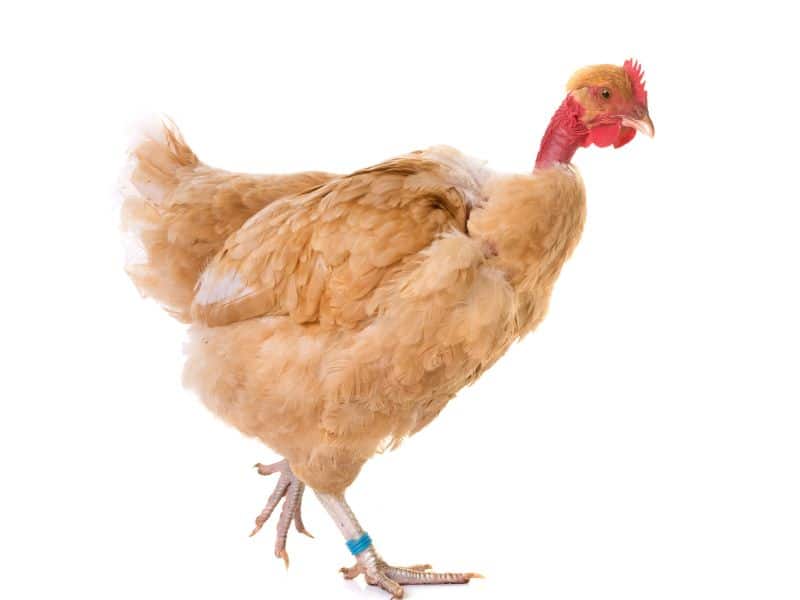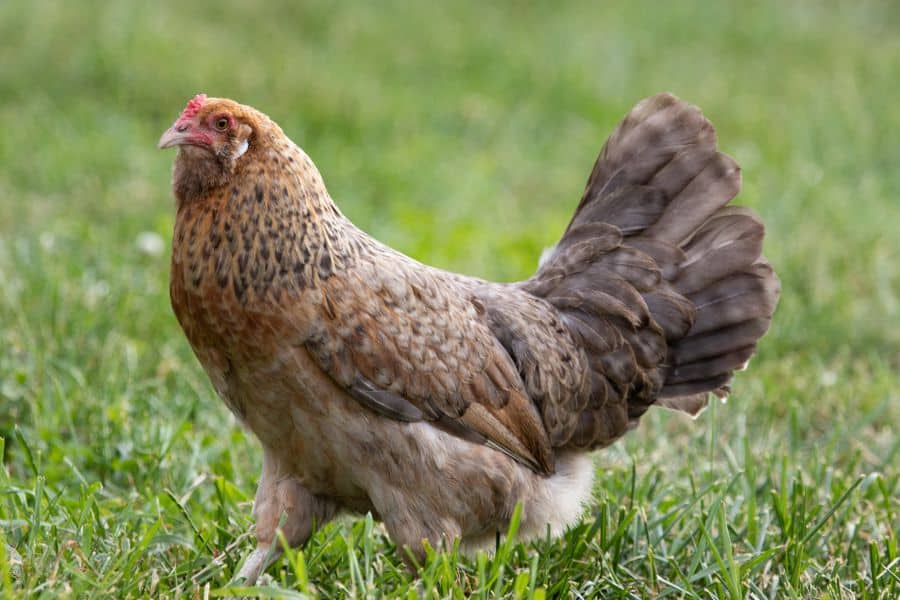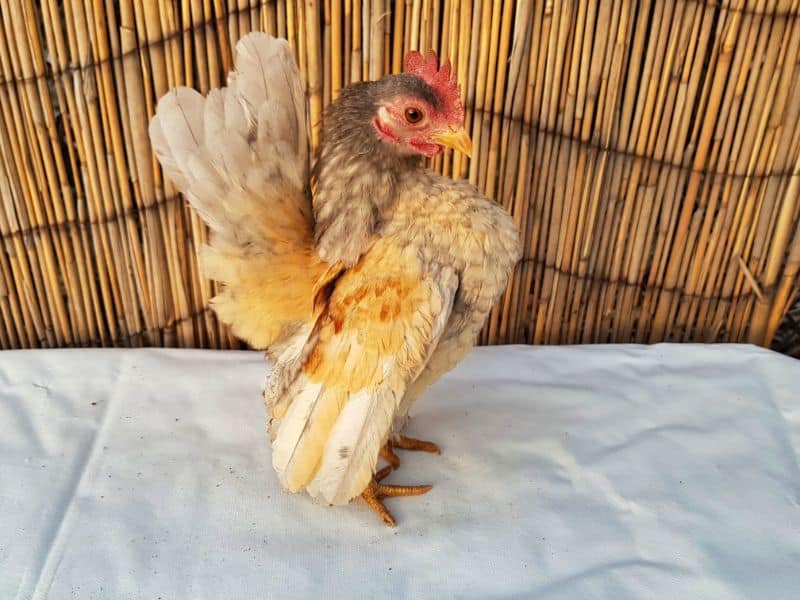The weird and wonderful world of brown chickens can be a little confusing to navigate. You’ll have many options to consider if you’re thinking about getting into chicken farming or just want a new member to change things up in your coop.
Brown is a common color in chicken and many breeds will be able to produce either partially or fully brown chickens. It helps to know your brown chickens, so you don’t end up stuck with a Cornish hen when you want a steady supply of eggs.
In terms of purpose, brown chicken breeds are a surprisingly varied bunch. You may have come to associate brown chickens with egg-laying but there are brown chickens for any purpose including pets.
Additionally, it is important to consider that brown does not refer to a specific shade of brown. There are chickens with browns so deep they look black, others so light you may think they’re yellow, tan, and everything in between.
Every kind of brown chicken you come across below will have something going for it. These chickens are full of character and history and will give you something to fall in love with when you go looking for the next member of your flock.
Top 16 Brown Chicken Breeds
Golden Comets
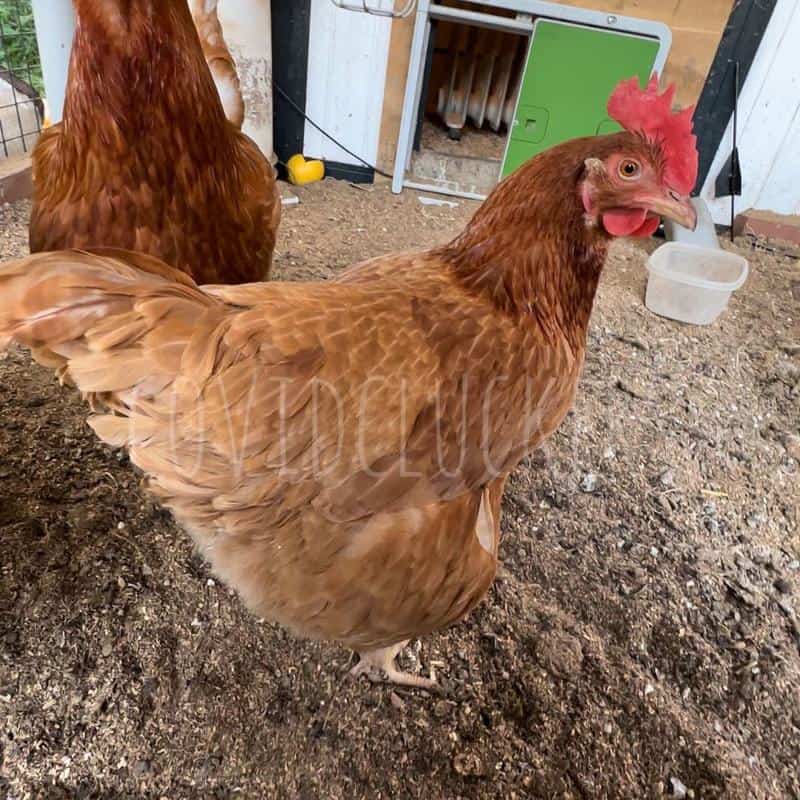
It’s difficult to give Golden Comets anything other than a gold star when it comes to egg-laying because they are very good at it. These impressive layers are the result of crossbreeding the White Leghorn with the Rhode Island Red.
Golden Comets are on the lighter side of the brown spectrum and mature hens will be mostly golden red with bits of white. These chickens can produce as many as 250 – 320 eggs every year during their peak and can start laying after just 16 weeks.
Whether you’re thinking about getting into chicken farming on a commercial scale or just want regular eggs for your table, you won’t go wrong with this brown chicken breed. Space isn’t a big issue for these chickens either because they are battery hens by design.
- Origin: USA
- Primary Purpose: Layers
- Egg Production: Very High
- Climate: Cold tolerant
- Personality: Mild-Mannered
- Max Weight (Rooster): 8 lbs.
- Special Fact: 250-320 eggs per year
Related: Golden Sex Link Chicken
ISA Brown
Another excellent egg layer, the ISA Brown breed of brown chickens was developed in 1978 in France. As far as chicken breeds are concerned, the ISA Brown is a relatively new entrant.
The ISA Brown is not considered a ‘true breed’ and was the result of crossbreeding a few different breeds that include Rhode Island Whites and Reds. The exact breeds that were crossed have been kept a secret.
At a young age, an ISA Brown will have white specks on light brown feathers. This changes to a reddish-brown when the chicken matures with some white near the tail.
These hens can produce as many as 300 eggs each year during their peak, but they may not be the ideal backyard chickens due to their shorter lifespans. These chickens have sex-linked coloration which makes it possible to distinguish males and females soon after hatching.
- Origin: France
- Primary Purpose: Layers
- Egg Production: Very High
- Climate: All Weather
- Personality: Mild-mannered
- Max Weight (Rooster):6 lbs.
- Special Fact: Sex-linked coloration
Lohmann Brown
Just like the ISA brown, the origin of the Lohmann Brown chicken is right in the name. This breed of chicken originated in Germany from the Lohmann Breeders company.
The Lohmann Breeders company, also known as Lohmann Tierzucht, started back in 1932, but it wasn’t until 1984 that they introduced their famed layers to the market. These prolific hens can produce up to 320 eggs in a 12-month period.
Lohmann Browns’ feathers are usually a caramel color with some white feathers in their neck area and at the tail tips. These birds are easy to tame thanks to their calm personality and are the result of crossing the White Rock chicken with the Rhode Island breeds.
- Origin: Germany
- Primary Purpose: Layers
- Egg Production: Very High
- Climate: Mild/Controlled
- Personality: Mild-Mannered
- Max Weight (Rooster):5 lbs.
- Special Fact: 320 eggs per year
New Hampshire Red
The New Hampshire Red is the result of selectively breeding Rhode Island Red chickens and the origins of this bird can be traced back to a 30-year period in the early 20th century.
When mature, these chickens will be medium to light red, although this may change in sunlight.
One of the unique facts about the New Hampshire Red is that it wasn’t the result of crossing two different breeds. It was developed through selective breeding of the Rhode Island Red, a process that involved farmers, and the New Hampshire Agricultural Experiment Station.
The New Hampshire Red was bred mainly for meat production, but egg-laying was also an important factor. Therefore, it is no surprise that these birds can produce around 220 eggs in one year.
- Origin: New Hampshire, USA
- Primary Purpose: Meat Production
- Egg Production: Mid-High
- Climate: Cold and Warm
- Personality: Docile but can be aggressive
- Max Weight (Rooster):5 lbs.
- Special Fact: State Poultry of New Hampshire
Rhode Island Red
There is probably no other breed in the world that is as ubiquitous with poultry farming as the Rhode Island Red. The Rhode Island Red was developed in the late 1800s but since then has gone on to be used in the development of other hybrids.
Fittingly, this chicken is the state bird of the state of Rhode Island for which it was named, and it is known for both its eggs and meat production capability. A Rhode Island Red hen can produce as many as 300 eggs in just one year.
The plumage of the heritage breed can sometimes look black but can also be a deeper pink with a black tail. Variants that are bred for industrial production may be lighter and smaller.
Rhode Island Reds are known for their hardiness, producing eggs even in harsh climatic conditions. The roosters can weigh more than 8 lbs. and may get aggressive, while the hens are typically mild-mannered.
- Origin: Massachusetts and Rhode Island, USA
- Primary Purpose: Egg and Meat Production
- Egg Production: High
- Climate: Cold and Warm
- Personality: Calm Hens, Aggressive Roosters
- Max Weight (Rooster):6 lbs.
- Special Fact: State bird of Rhode Island
Buff Orpington
Buff Orpington are exceptionally striking chickens and despite their size are mostly used as show birds. This chicken breed traces its roots back to 1886 when it was developed to be a dual-purpose breed in the south-east of England.
Orpington Chickens come in a variety of color but only five are recognized in the USA including the Buff variant.
In addition to their Buff plumage, these chickens have bodies that are broad and heavy and look even larger thanks to their fluffed-out feathers. The legs of Orpingtons are almost completely covered by the body’s plumules.
Orpington roosters can weigh more than 10 pounds and the hens produce over 200 eggs in a single year. Some records state that Orpingtons were capable of producing 340 eggs in a year, but this quality was bred out as the bird’s looks were prioritized.
- Origin: Kent, England
- Primary Purpose: Exhibition
- Egg Production: Mid
- Climate: Cold Hardy
- Personality: Mild Mannered
- Max Weight (Roosters): >10 lbs.
- Special Fact: Original Orpington chicken was black to hide London’s soot and dirt.
Cochin
Brown is one of the recognized colors of this giant breed of chickens and this is great news if you’re looking for a giant exhibition chicken.
Cochins originated from China and their entry to England and the United States caused quite a stir, inspiring many to take up chicken farming. These birds can weigh as much as 13 pounds.
Cochins are known for being exceptionally cold hardy. Their fluffy feathers and feathered legs contribute significantly to this.
Despite its size, a brown Cochin should not be your first choice if you want to keep chickens for meat. At most stages of its life, the texture of the meat is not desirable, but it can be harvested as capon at 15 to 16 months.
- Origin: China
- Primary Purpose: Exhibition
- Egg Production: Mid
- Climate: Cold hardy
- Personality: Mild-Mannered
- Max Weight (Rooster): 13 lbs.
- Special Fact: Cochins are excellent mothers.
Barnevelder
The Barnevelder is a different kind of brown chicken because they lack the sort of uniformity that is seen in other chicken breeds. This breed was not recognized as an official breed until 1923 although the process of developing it started back in the 1850s.
The brown version of the Barnevelder will have a black head and neck changing to bronze with twin black lacing. Although they are not prolific layers, producing 180 to 200 eggs every year, these birds’ eggs are popular due to their chocolate brown color.
Barnevelders were bred from a variety of Asian and Dutch chickens in the Netherlands and were named after a town in the Gelderland Province. There is a possibility that the American Wyandotte and the Buff Orpington from Britain were also part of this breeding process.
Barnvelder chickens can produce eggs reliably even during winter and are a hardy breed. These qualities are believed to have been passed down from the Croad Langshan chicken breed in addition to the brown egg color.
- Origin: Netherlands
- Primary Purpose: Egg and Meat Production
- Egg Production: Mid
- Climate: Cold and Warm
- Personality: Mild-Mannered
- Max Weight (Rooster):4 lbs.
- Special Fact: Were once compared to mongrel dogs.
Buff Brahma
Buff Brahma is a chicken breed that understands the concept of dressing for the weather. These brown chickens have a base color that is golden brown with black hackles.
Between the 1850s and 1930, the Brahma breed was key to the meat supply of the United States. Brahma chickens were developed in the United States but there is uncertainty regarding the origins of the birds they were originally bred from.
The feature that makes these chickens stand out is the feathers that go all the way down to their feet. These chickens are not just heavier than regular domestic chickens, they also stand taller with some roosters reaching 30 inches.
A Buff Brahma rooster can attain a weight of 12 lbs., yet these chickens have exceptionally calm demeanors. Although they are primarily bred for meat, Buff Brahmas can still manage around 150 eggs in a year, with production not stopping during winter.
Check out the video of a Buff Brahma flock below.
- Origin: Unknown
- Primary Purpose: Meat Production
- Egg Production: Mid
- Climate: Cold and Warm
- Personality: Mild-Mannered
- Max Weight (Rooster): 12 lbs.
- Special Fact: Gifted to Queen Victoria in 1852
Naked Neck
The Naked Neck breed of chickens is also impossible to ignore in the barnyard. These chickens lack any feathers around their necks and vents due to a genetic mutation.
This chicken breed’s unique look initially led to a belief that it was the result of crossing chickens and domestic turkeys. This is why the bird may still be referred to as the Turken.
These birds are believed to originate from somewhere in Asia because they feature in some old paintings from Japan, but there is no consensus. The breed was introduced to the UK in the 1920s and was only recognized as a breed in America in 1965.
Despite their lack of neck feathers, Naked Necks handle cold weather reasonably well and this lack of feathers all over makes them well-suited for hotter climates. Naked necks come in a variety of colors of which the buff is the one that is considered a brown chicken.
- Origin: Probably Asia
- Primary Purpose: Meat Production
- Egg Production: Low to Mid
- Climate: Cold and Warm
- Personality: Docile but can be aggressive
- Max Weight (Rooster):5 lbs.
- Special Fact: Rare breed in North America
Buckeye
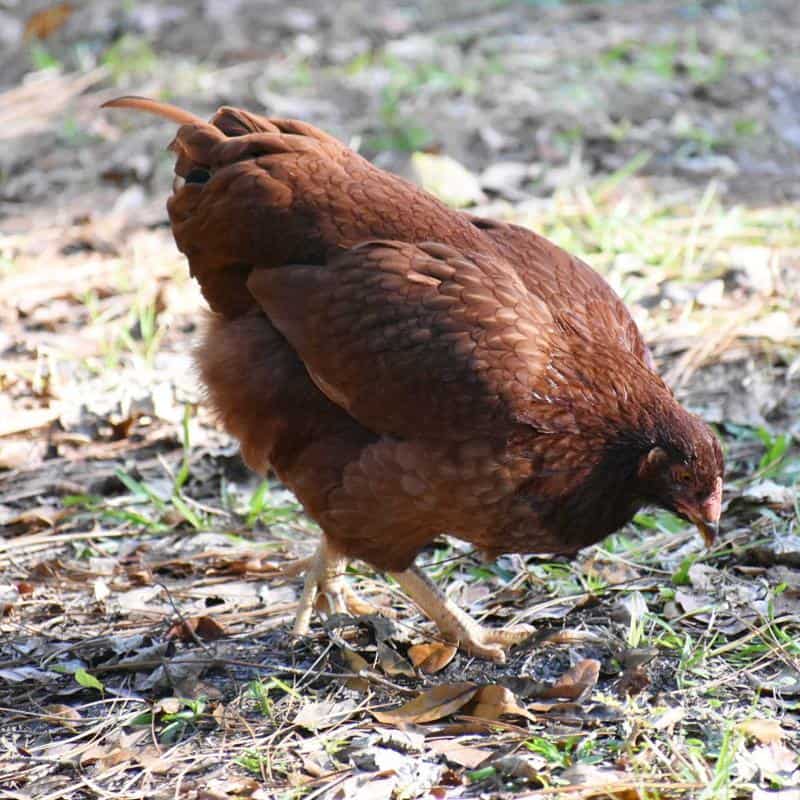
It comes as no surprise that the Buckeye chicken was developed in the state of Ohio. This chicken was given its name because its color resembles that of the seeds of the Ohio Buckeye tree.
The Buckeye chicken came about in the late 1890s and is known for having been developed by a woman. Nettie Metcalf’s goal when creating the Buckeye was to get a chicken breed that remained productive during the Midwest winters which were particularly cold.
The Buckeye is mainly known for having plumage that is mahogany red with a tail that is black. The hens of this breed look similar to those of the Rhode Island Red although they have bodies that are more compact.
Buckeyes make a good dual-purpose breed with current layers able to produce as much as 240 eggs in a year. At maturity, the males weigh about 9 pounds and have breast meat that is almost as dark as the thigh meat.
- Origin: Ohio, USA
- Primary Purpose: Eggs and Meat
- Egg Production: Mid – High
- Climate: Cold Hardy
- Personality: Active but Mild Mannered
- Max Weight (Roosters): 9 lbs.
- Special Fact: Only American breed developed by a woman
Cinnamon Queen
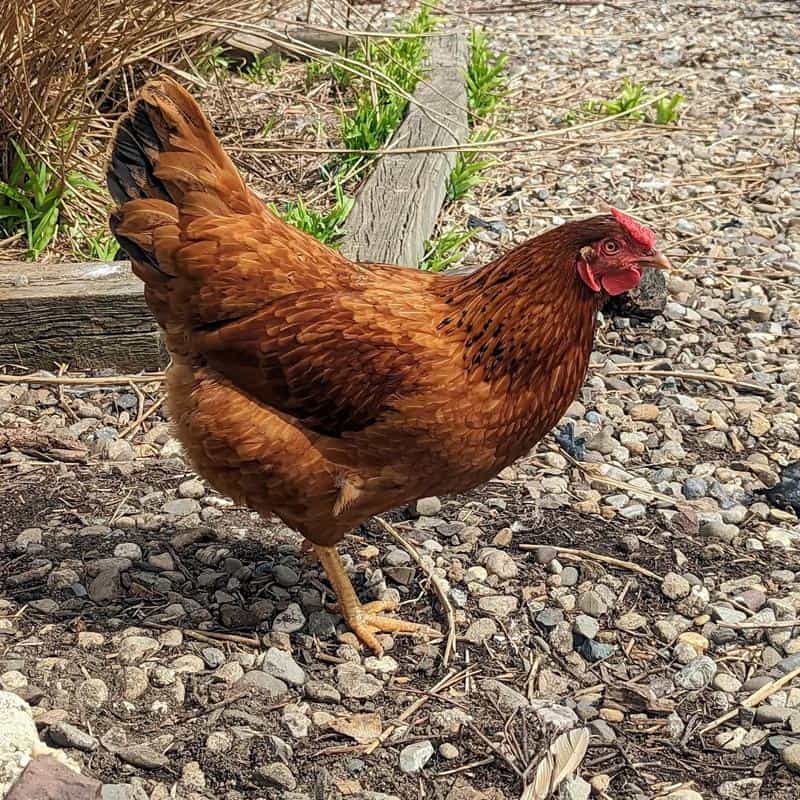
If you currently live outside the United States, it is unlikely that you will be able to get your hands on a Cinnamon Queen just yet. This breed is still under development and the American Poultry Association hasn’t yet included it in its list of accepted breeds.
However, the Cinnamon Queen holds a lot of promise as both a prolific layer and a source of substantial meat. As a layer, the hens can produce as many as 300 eggs in just one year and the roosters can weigh as much as 7.5 lbs.
The Cinnamon Queen gets its name from the eye-catching reddish-brown plumage on the females. It is bred from roosters of the Rhode Island Red breed and Rhode Island White hens and is considered a hybrid.
Cinnamon Queens do not breed true just like other chicken hybrids. This means that instead of getting cinnamon queen chicks, you’ll end up with a mix of chicks and these won’t be sex-linked.
- Origin: USA
- Primary Purpose: Egg Production
- Egg Production: Very High
- Climate: Cold and Warm
- Personality: Mild-Mannered
- Max Weight (Rooster):5 lbs.
- Special Fact: Hard to find outside the USA.
Easter Egger
Easter Egger doesn’t refer to a specific breed of chicken but is used to describe the chickens that result from crossing any chicken with those carrying the blue-egg gene.
The diverse origins of these chickens mean the range of feather colors that are considered brown can be wide. These chickens also have a variable rate of egg production ranging from 200 to 280 some of which can be quite large.
The meat from Easter Eggers has been described as ‘not great’, while some have compared the taste to that of quail. These chickens also tend to be small with roosters reaching around 5 lbs. in weight.
The main appeal of these chickens is their ability to produce colorful eggs which have been known to include colors like brown, blue, pink, green, and pale yellow.
- Origin: USA
- Primary Purpose: Production of Colored Eggs
- Egg Production: Mid to High
- Climate: Cold and Warm
- Personality: Mild-Mannered
- Max Weight (Rooster): 5 lbs.
- Special Fact: Are Hybrids or Mixed breeds.
Serama
The typical Serama is unlikely to weigh more than 500 grams and they are the smallest breed of chicken in the world. However, their small size does nothing to diminish the attention that this special breed commands.
Seramas are said to be the result of breeding bantam chickens from Malaysia and Japan and these unique birds are normally kept as pets. Seramas are a new breed and were first put on exhibition in 1990.
This breed of chicken is known for its upright posture which gives them a stance that is almost human-like. They have a full breast, tail feathers that are held close to the body, and wings held vertically down and near the ground.
The number of eggs laid by Serama hens is variable with some placing the number at 150 while others claiming they can produce as many as 250. However, Seramas don’t make good layers since their eggs are too small to make a substantial meal.
Serama chickens look like they were born to show off thus it’s no surprise that they feature heavily in poultry shows. They come in a variety of colors that also include brown.
- Origin: Malaysia
- Primary Purpose: Pets and Show
- Egg Production: Mid to high
- Climate: Warm
- Temperament: Mild
- Max Weight (Rooster and hen): 1.1 lbs.
- Special Fact: Have an upright posture
Also Read: Small Chicken Breeds
Cornish/Indian Game
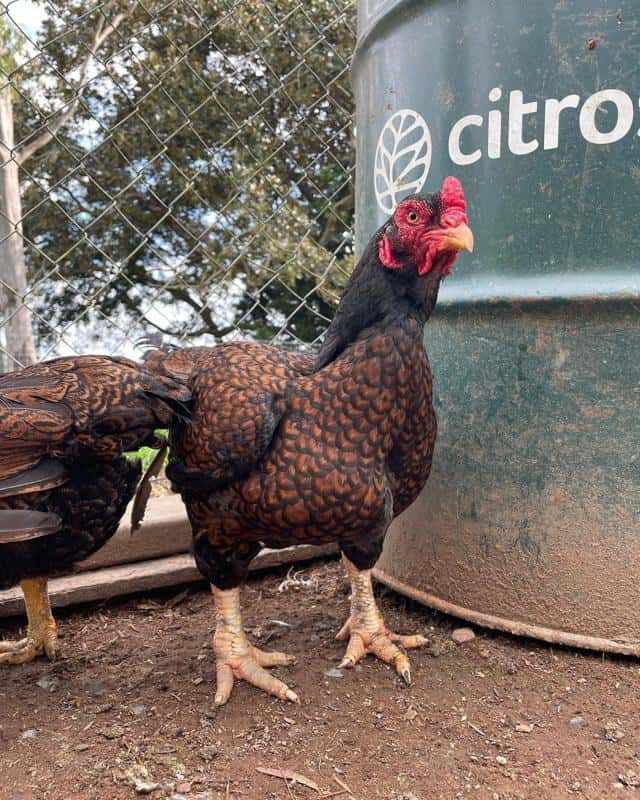
Cornish chickens trace their origins back to 1820 when they were developed by England’s Sir Walter Gilbert. These heavy muscular birds were unfortunately developed for cockfighting, but they showed little interest in such activity.
Today this breed of chicken is mainly bred for its meat, and they are harvested earlier than most other breeds. At maturity, Cornish hens may weigh as much as 8 lbs., but many are harvested when their market weight is around one pound.
The meat from Cornish chicken has been described as both flavorful and tender. They are, unfortunately, not prolific layers and most hens don’t lay more than 160 eggs in a year.
On their own, these chickens tend to be friendly, but they can get quite aggressive with other chicken breeds and even people. These chickens don’t favor weather that’s either too hot or too cold and their short legs can cause breeding problems.
- Origin: England
- Primary Purpose: Meat
- Egg Production: Low
- Climate: Temperate
- Personality: Aggressive
- Max Weight (Roosters):5 lbs.
- Special Fact: Very short lifespan
Derbyshire Redcaps
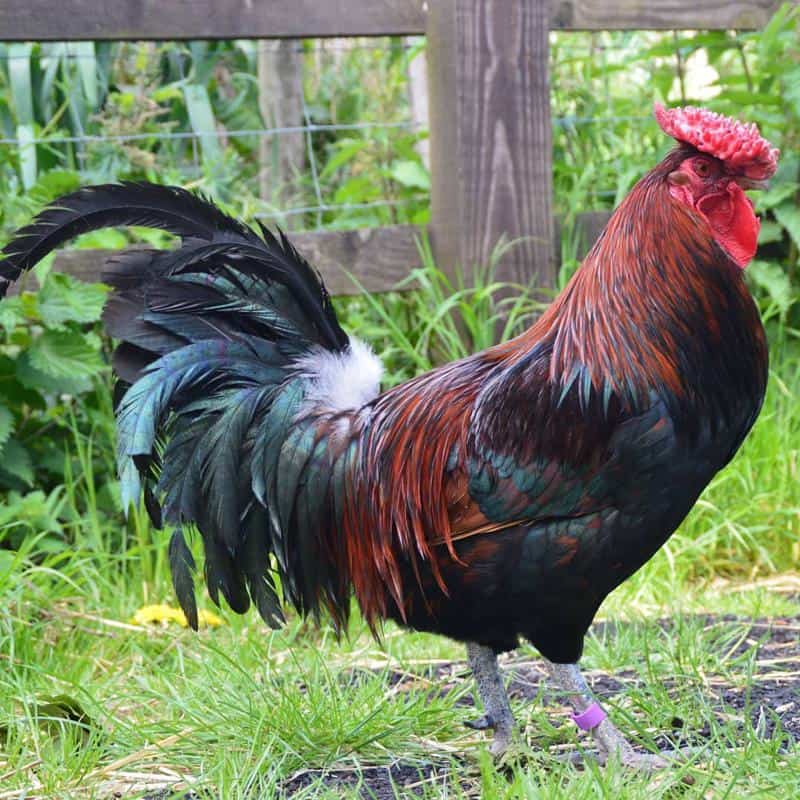
As the name suggests, this breed of chicken is from England and was once a farm favorite as a layer. However, the breed has fallen out of favor in recent years and is currently considered a vulnerable species.
There is no concrete data on which chicken breeds were crossed to produce Derbyshire Redcaps. However, the list may include currently extinct breeds like the Lancashire Moonie and the Yorkshire Pheasant.
The plumage of Derbyshire Redcaps is different hues of brown, black, and red with the roosters being especially colorful. However, it is the large ‘rose-type’ comb that defines this breed because it can be as much as 3 inches long.
Derbyshire Redcaps are unique because they can be kept for eggs, meat, and ornamental purposes. These chickens are more athletic compared to other chicken breeds and will require a high fence to keep them within a certain area.
Traditionally, the hens could produce 200 or more eggs in a single year and were even popular in some parts of the USA. Derbyshire Redcaps fell out of favor rather quickly in the space of a few short years and are now rare outside their country of origin.
- Origin: England
- Primary Purpose: Eggs and Meat
- Egg Production: Mid
- Climate: Warm
- Personality: Shy
- Max Weight (Roosters):5 lbs.
- Special Fact: Excellent foragers
Also Read:
What’s In the Color of a Chicken?
For some chicken owners, uniformity is an important factor in their flock. Uniformity can make it easy to distinguish their chickens from those of neighbors and it also has an aesthetic that some find desirable.
The wide range of brown chicken breeds makes it possible to have different breeds of chicken with one uniform color. Even a farmer looking to keep some brown chickens for meat and others for eggs will still be able to attain a good level of uniformity.
When choosing brown chickens with the intention of breeding, it is important to know whether your chicken is a true breed or a hybrid. If you get a hybrid, there is no guarantee that the chicks you get will have a color that is consistent with their parents.
Another factor to consider is that many chicken breeds, including those not listed here, will have a brown variant. Therefore, if you have your heart set on a specific breed that isn’t usually brown, you should still check if there is a lesser-known brown variant.
At the end of the day, there is a brown chicken breed for all occasions. Whether you’re looking for one that will reliably produce eggs or one that will give you lots of meat, you’ll have many options to choose from.
For bird show enthusiasts, breeds like the Serama are both good pets and capable of impressing judges. Check out this video of these beautiful birds impressing at a show in Tennessee.
